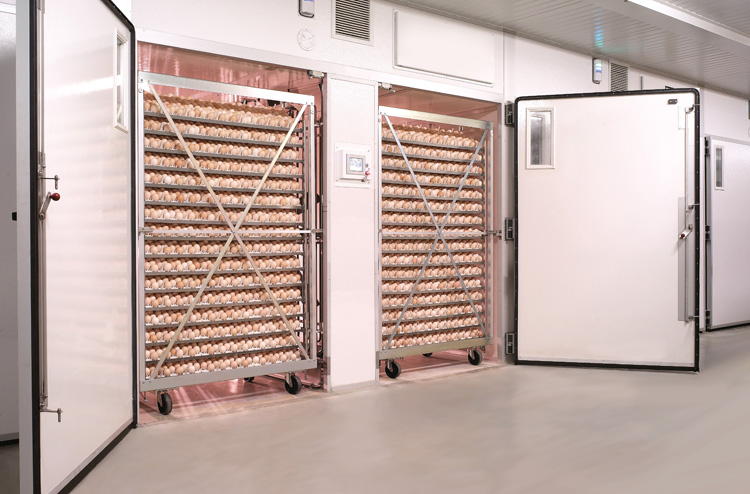 The hatchery, as a segment of the poultry production chain, aims to produce vital chicks that are free of pathogens. Good cleaning and disinfection (C&D) procedures within the hatchery are necessary to reduce and continually minimize the level of microbiological contamination, and subsequently the risk of microbiological contamination in the building, machinery, eggs and poults.
The hatchery, as a segment of the poultry production chain, aims to produce vital chicks that are free of pathogens. Good cleaning and disinfection (C&D) procedures within the hatchery are necessary to reduce and continually minimize the level of microbiological contamination, and subsequently the risk of microbiological contamination in the building, machinery, eggs and poults.
Especially in a hatchery it is crucial that the detergents which are chosen are proven safe for equipment and different types of material (copper, aluminium, etc) but at the same time ensure an excellent cleaning result.
The goal of disinfection is very clear: achieve a 99,999% microbial reduction. It’s all about avoiding pathogens building up to dangerously high levels. At these high levels they can cause serious health problems for the animals and substantial economic losses to the farmer. It’s a never-ending job that requires a rigorous approach.
One cannot be selective about which areas get disinfected and which are not. Bacteria, viruses and fungi will find a stronghold in these ‘forgotten areas’ and finally spread disease through people, poultry, transport, vermin, insects etc. that are passing by these infectious hot spots.
